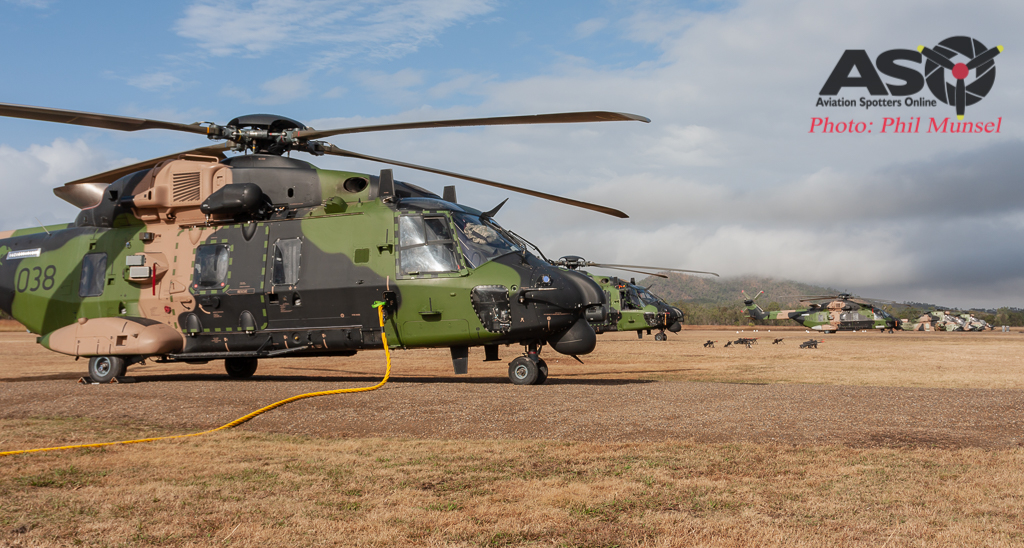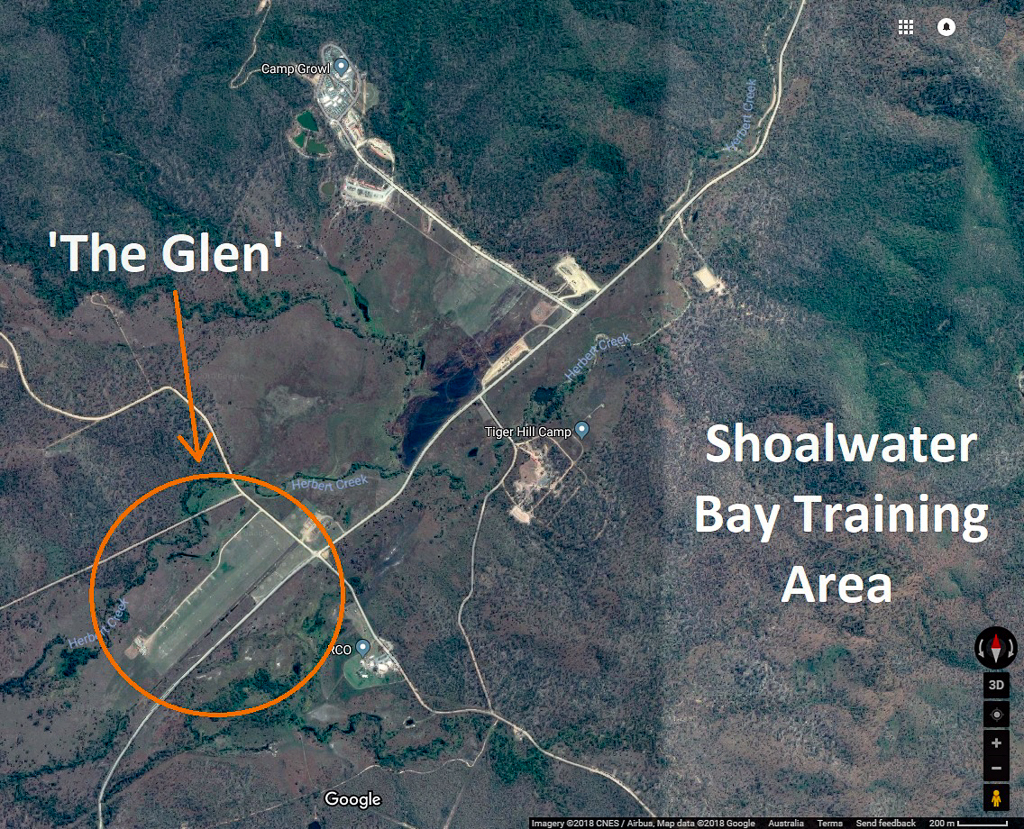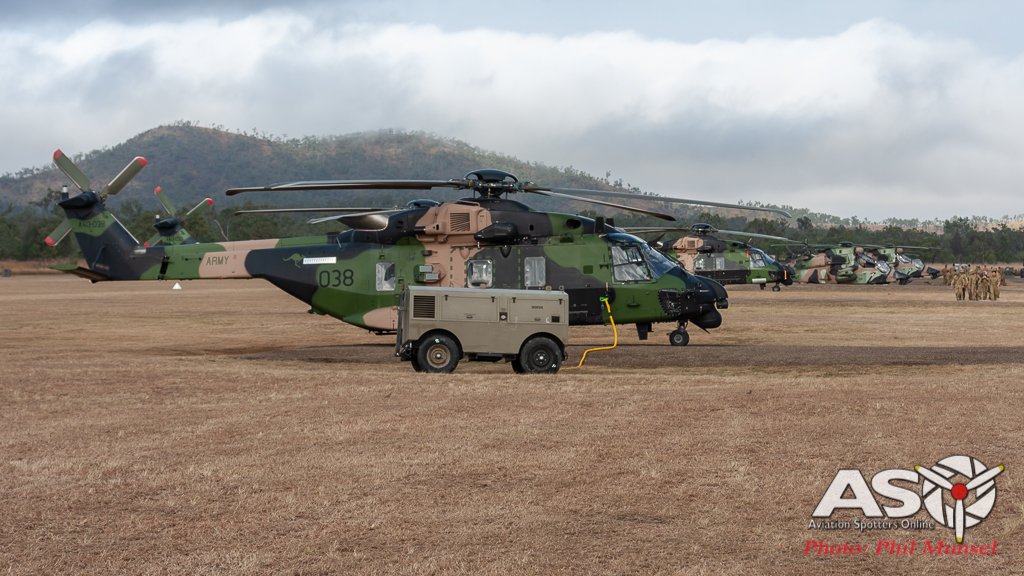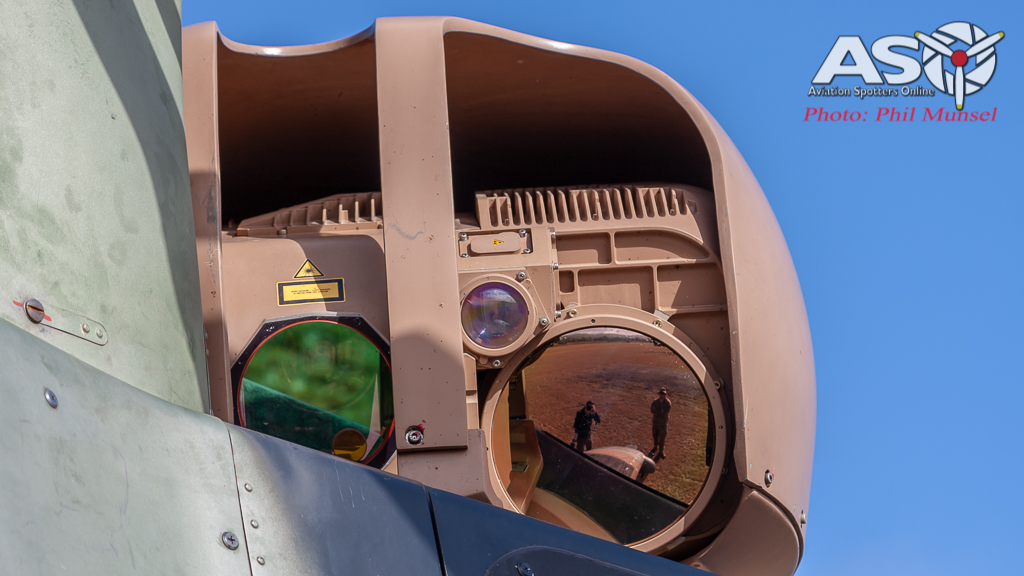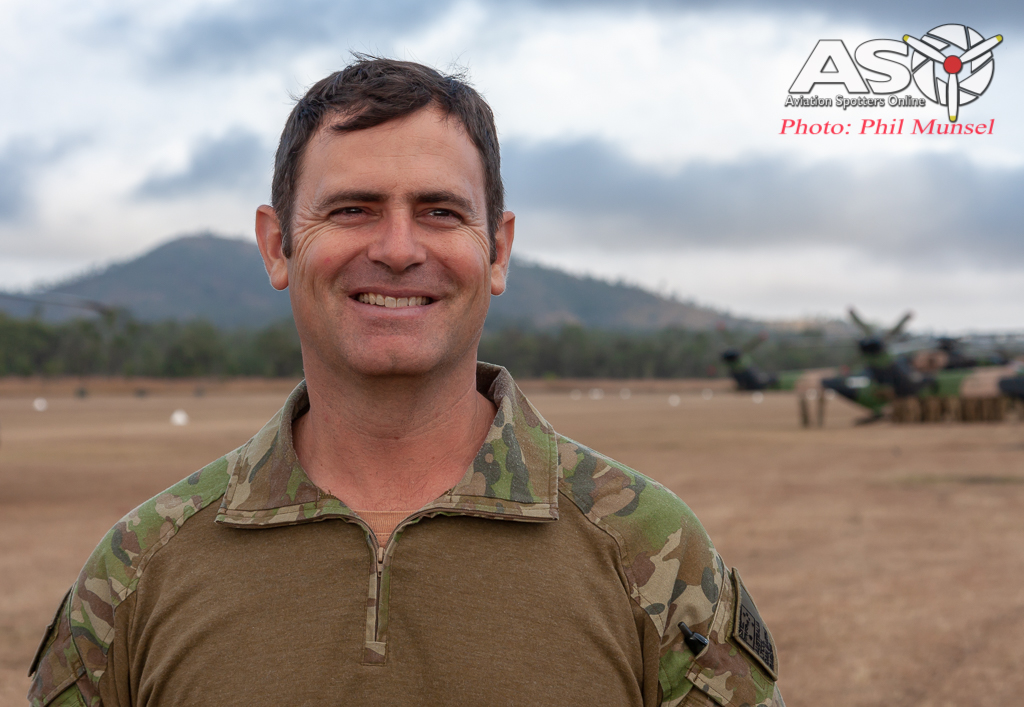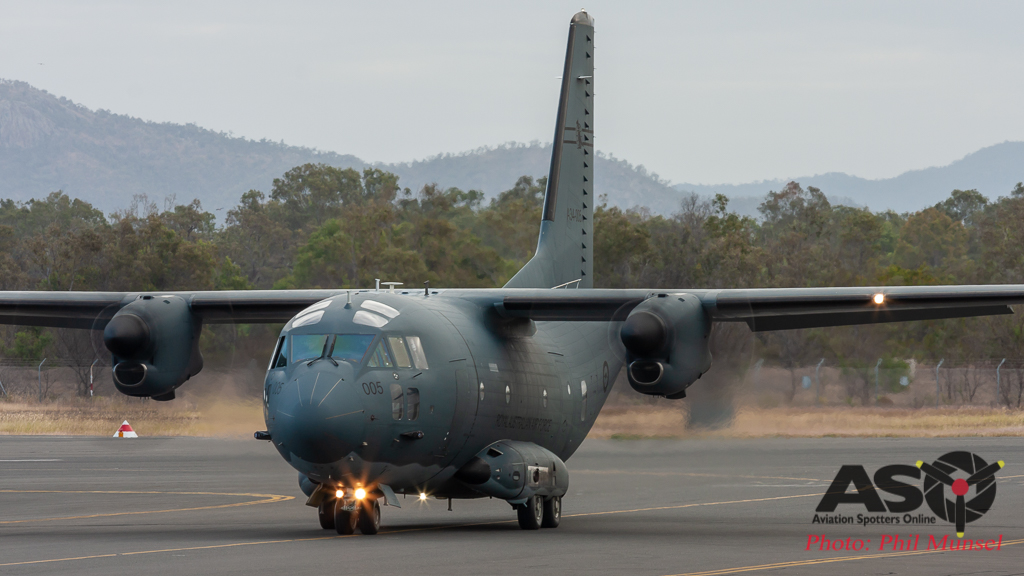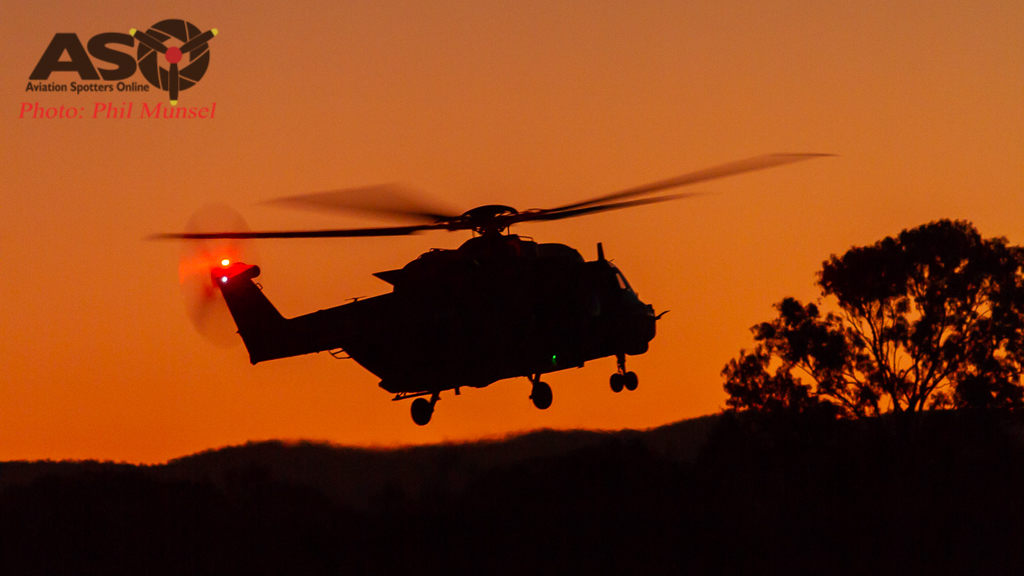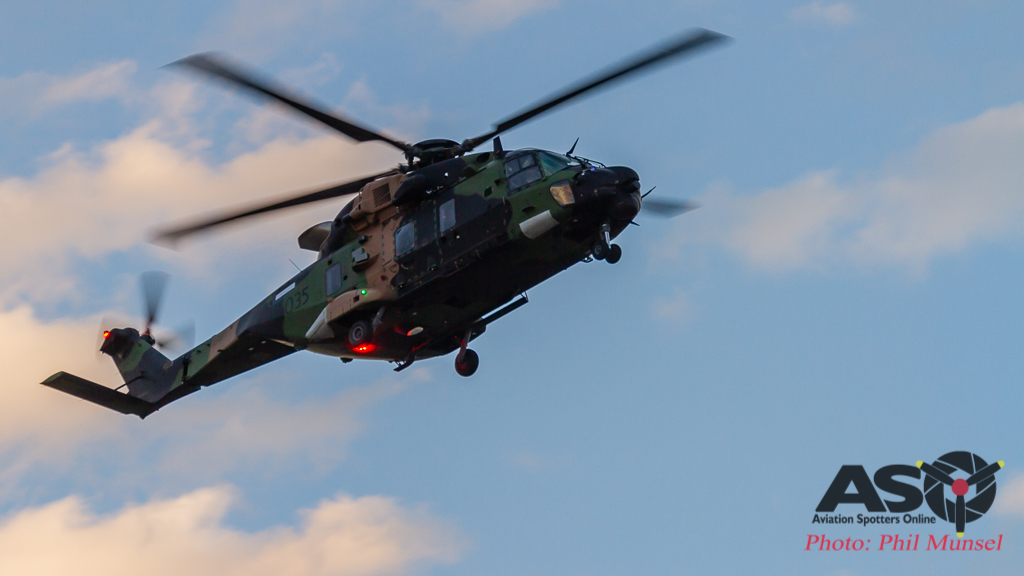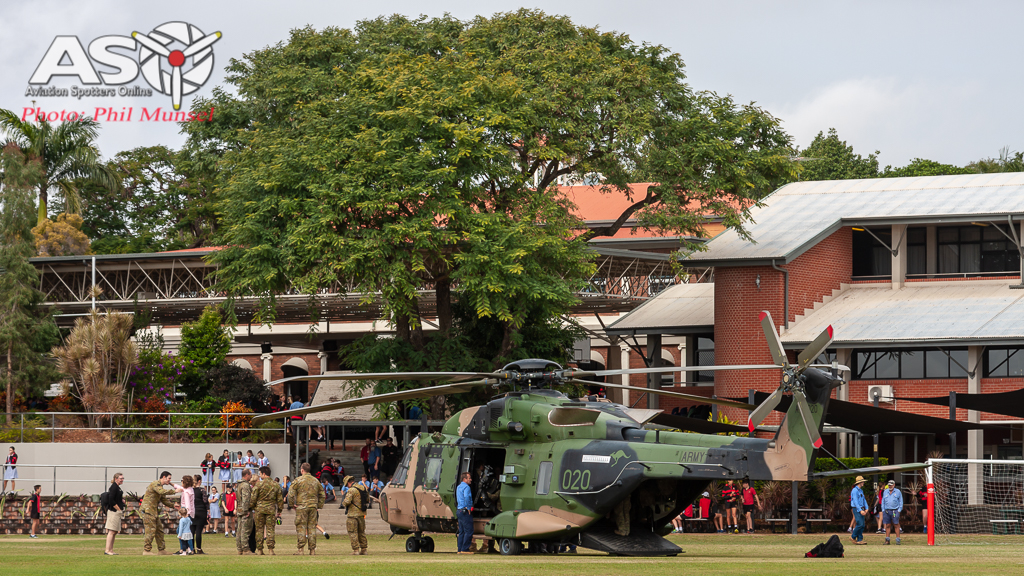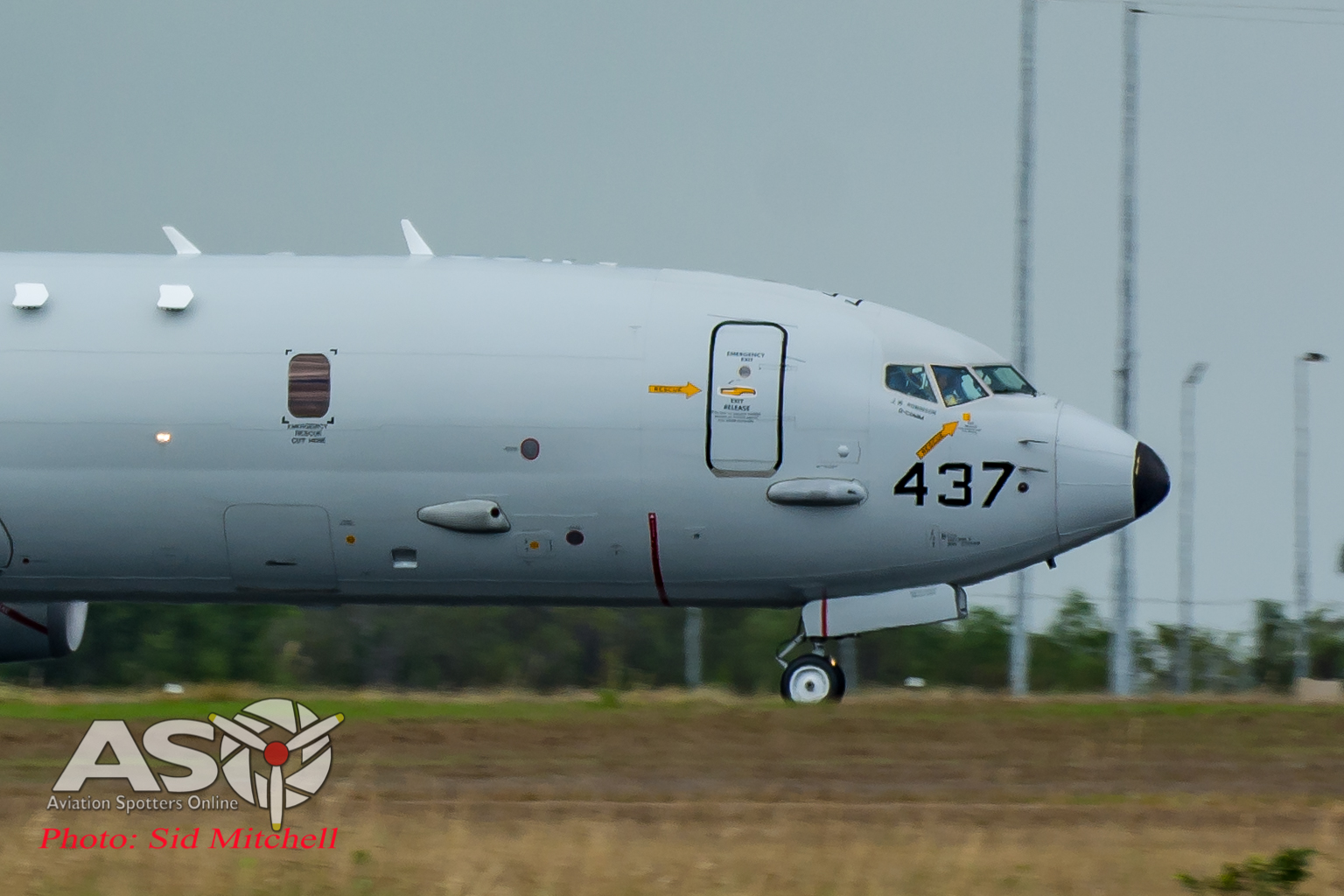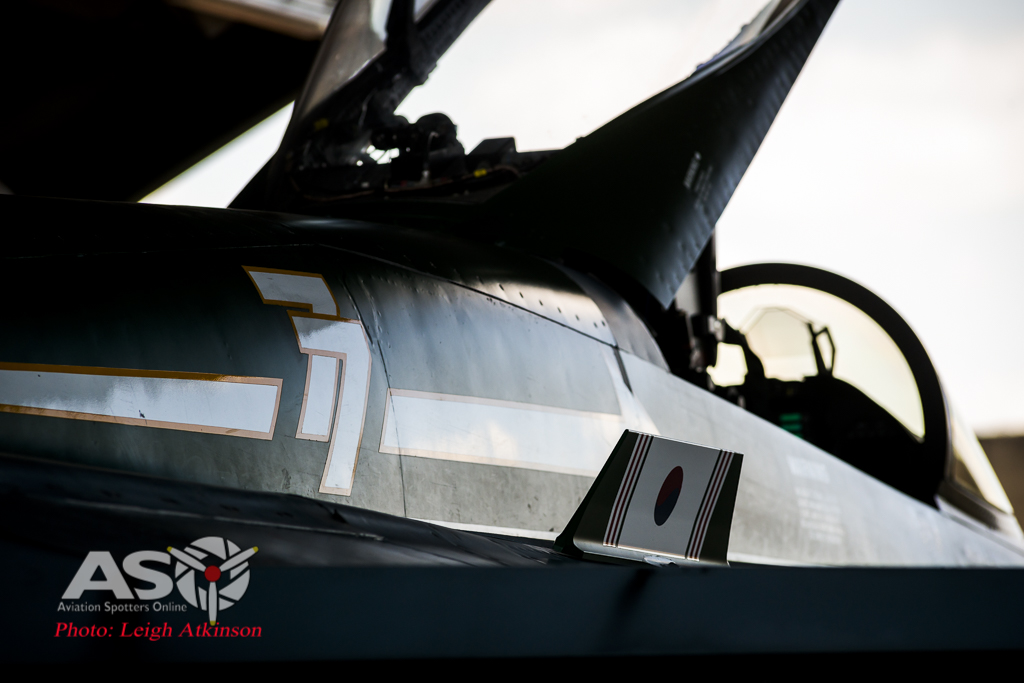Exercise Hamel is a large enduring biennial two-week event lead by the Australian Army, occurring on the even numbered years, designed to test, hone and evaluate war fighting skills of a brigade to confirm they are battle ready. It is also an opportunity for commanders to test their formations and for Joint Task Force Headquarters to practice and utilise their processes and procedures in the ever-changing and challenging conditions of modern warfare.
Exercise Hamel was conducted this year from mid to late June. It brought together nearly 9000 personnel and put them through high intensity and rigorous series of training scenarios in the diverse and complex environment of the military run Shoalwater Bay Training Area, Queensland. The Shoalwater Bay Military Training Area (SWBTA) of Central QLD region boasts a large 4,545 km2 area for military training under the ownership of the Australian Defence Force giving a realistic training environment that is unique in the world. The exercise also included units operating at Cultana SA, Mt Bundy in the NT and High Range near Townsville.
This year’s focus is with the combined arms of 7th Brigade and 1st Division Headquarters, both based in Brisbane, QLD. Training and testing capabilities including amphibious activities, manned and unmanned aerial platforms, humanitarian and disaster relief. Ex Hamel is the final major exercise before overseas deployment later this year and on the successful completion of the intensive and demanding training, they will have 12 months ahead of them as the Army’s proven combat ready brigade.
Other scenarios included high-end warfighting capabilities, land based trauma systems and working together with the combined armed forces of the Australian Army, Navy and Air Force and with the added opportunity to train alongside allies like the United States Army and Marines Corps and New Zealand Defence Force.
There are a diverse range of elements involved in the exercise included Armour, Artillery, Infantry, Engineers, Logistics, Aviation, Combat and Security, Communications IT and Intelligence to name a few. It was also a chance to try and test new platforms and capabilities in combat scenarios, embarking land forces onto the Navy’s new Amphibious ships, trials with unmanned aerial systems and working with the RAAF’s newly acquired C-27J Spartan.
As part of the lead up to Ex Hamel, 7th Brigade was also engaged with Landing Helicopter Dock (LHD) – HMAS Canberra, including other attachments and Army units, to carry out a series of sea exercises and amphibious manoeuvres as part of Exercise Sea Explorer off the Queensland coast of Bowen. Of note, Exercise Sea Explorer 2018 was conducted during the anniversary of the D-Day landings, June 6th, 1944, which was the largest amphibious operation in history.
This year’s 2018 Exercise Hamel also marks the 100th anniversary of the battle fought with their American allies in the trenches in and around the small town of Le Hamel in France.
The Battle of Le Hamel is the origin from where the name Hamel was taken, a successful attack of Australian and US soldiers who dug in together with the support of British tanks. They fought in a little rural settlement in northern France during July of 1918 against various German positions. Australian, Lieutenant General John Monash was in charge of the attack, combining the Australian Imperial Force and the American Expeditionary Force (AEF). He had planned and calculated the attack with tactics of the combined arms to win the battle in a mere ninety-three minutes, just three minutes longer than he had estimated. Sir John Monash has been considered one of the most outstanding allied generals of world war one and the most famous commanders in Australian history.
Task Group Griffin, formerly ‘Battle-group Griffin’, this year comprises of the Australian Army’s 1st Aviation Regiment elements based in Darwin and the Townsville based 5th Aviation Regiment joining together along with other elements, providing an air mobile capability and support component to the visitors and participants involved with Exercise Hamel. From providing troop mobility in an in-exercise capacity, reconnaissance, air assault, attack, combat recovery, including life-saving aeromedical and non-combatant evacuation capability, Task Group Griffin members have played an important role in supporting the exercise.
Aviation Spotters Online photographer Phil Munsel was given a chance for a brief visit to observe and learn about TG Griffin which was deployed at “The Glen” within the SWBTA. To get there is a drive of approximately 50km North of Rockhampton on the Bruce Highway, before turning off and driving a further 20-minutes along both bitumen and dirt roads until you can go no further, arriving at the checkpoint gate of the Green Route, or as commonly known as ‘The Green Gate’.

Approaching the check point ‘The Green Gate’ on the green route in the south west part of the Shoalwater Bay Training Area (SWBTA)
I was met by my escort for the trip, CAPT Mick Trainor who took me further into the bay to our destination, an airfield called ‘The Glen’. After a quick trip we came to a clearing on the left passing the military fire service between the road and ‘The Glen’. Turning off and past the end of the grass field we parked and made our way to the command post to sign in.

The end of the small grassed airfield named “The Glen” , home for Task Group ‘Griffin’ during Ex Hamel 2018
I was met and introduced to the Commanding Officer, Lieutenant Colonel Dan Bartle. The CO promptly took us out to the field to observe the aviation component currently on the ground. Although the Army’s CH-47F Chinooks were involved in the exercise, only 5 x MRH90 Taipan’s and 6 x ARH Tigers were deployed to the field. One of the MRH90’s was in a state of readiness with ground power connected for the quickest turnaround possible. The high state of readiness was due to the aircraft undertaking the role of Aeromedical Evacuation (AME).

Army Reservists get their chance to look through the rotary wing component of TG Griffin whilst on exercise.
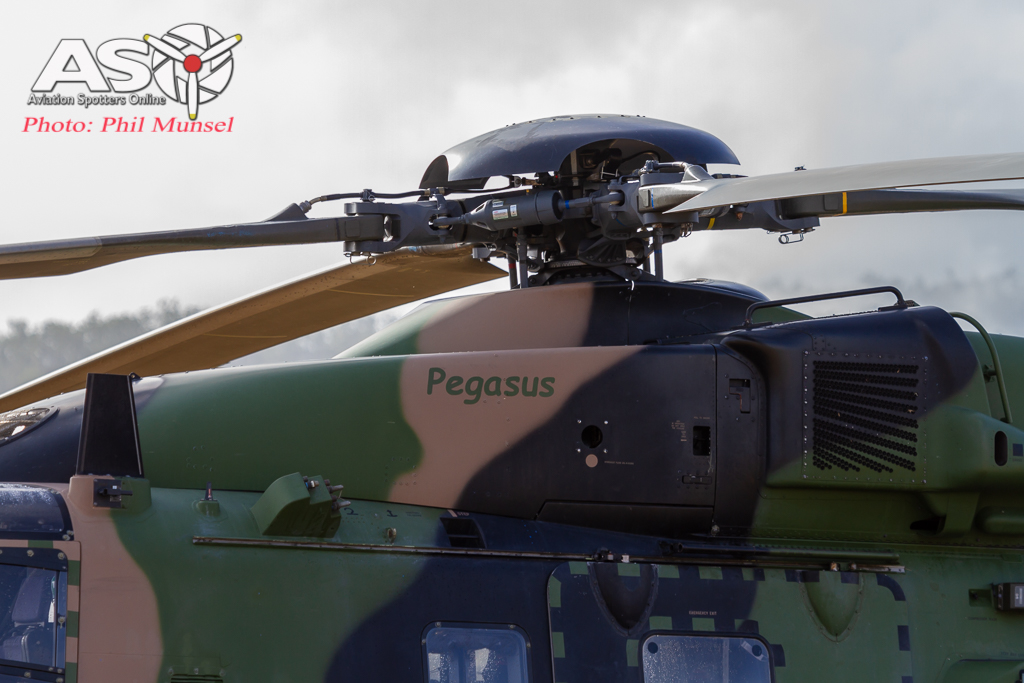
The MRH90’s are now slowly being named like their predecessor the S-70A-9 Black Hawk. (A40-030 Pictured)
After capturing a few frames and moving between aircraft, I was able to interview the CO for a further insight to the exercise.
Interview with Commanding Officer for Task Group Griffin
Position in the exercise?
I‘m the commanding officer of the 1st Aviation Regiment in Darwin, the Tiger helicopters. On this exercise I’m the commanding officer of the task group, ‘Task Group Griffin’ which brings together the 1st Aviation Regiment Tigers and the 5th Aviation Regiments MRH90 helicopters.
How long does it take to plan & mobilise all that’s required to bring the platforms here to the exercise?
Yeah sure, so we came together for a couple of months that we’ve been planning this activity and then we set off from Darwin about 2 weeks before the exercise and then consolidate in Townsville for a week to come together and rehearse, then into Shoalwater Bay for the two weeks of the actual exercise.
Have you had much interaction with the other nations participating?
Yeah, so we have done joint missions with the US Marine Corps. We have a French officer on exchange with us taking us through lessons from their experience in Mali, Libya and Afghanistan.
How often would you train with other services and other nations?
For us it’s reasonably routine in Darwin because we have the Marine Force Rotational Element in Darwin and they bring an air element every year. So, this year it’s the tilt-rotors you saw, I think a little earlier today and also have Cobras and their Huey Venom coming into Darwin, but only for a very short period, the Tilt-rotor guys are here for a little bit longer.
What opportunities has this exercise given different to that of other regular training?
Ah it’s fantastic for us coming to Hamel, because of a scale, so you know we don’t always get to work with the 5th Aviation Regiment obviously being Darwin and Townsville. So, the first thing is for us coming together and working with our sister regiment and then working together with the 8000 odd folks that are in the bay here, on scale we can’t do. So, the amount of Tanks and Armoured vehicles that are here in the simulated air defence threat, it’s fantastic training area.
And the training area in Shoalwater Bay is….?
Its magnificent, ah it’s got some relief, some terrain and some hills and there’s a weather. Ah…in Darwin it’s quite flat, so we are really thankful for the opportunity.
Have you had any interaction with the RAAF’s Spartan and if so, has it made any difference to the mobility?
Yeah, we’ve been speaking to them, I guess they’re a very new capability as well and we’ve had I guess some opportunities to talk to each other about capabilities and where we see opportunities. Ah we haven’t met with them, I haven’t met with them on this exercise but there’s a couple of ex-Army guys there we know and we’re quite keen to interact with them in the future as a method of wet wing FARP’ing (Forward Arming and Refueling Point) if we are fueling the aircraft, re-arming the aircraft and also for using, carrying out forward aircraft recovery teams, simply to recover.
Was there any involvement with special forces in this exercise that you know of?
I’m not sure that I can talk about that.
Have you learned or taken away anything from this exercise?
We take away heaps, so I guess what we tell all our guys here is we must be absolutely safe and then we must do everything professionally, look after our reputation and everything else here is experimenting and learning, so we’re trying new things, were working with ground Logistics convoys out to the ship to work with LHD and then we are working with our traditional partners in the combined arms team, artillery and infantry.
So, what made you decide you wanted to fly for the army?
I’ve always wanted to fly, I’m one of those guys. I think it was my granddad, he was in the air force in World War 2 and told lots of stories and I just had a bit of a bug for it. I started flying out at Western Australia at the Royal Aero Club of WA at Jandakot airport there, I think I did my first solo in Cessna 152 ‘Uniform Foxtrot Charlie’ when I was about sixteen, I just had a bit of a bug, from there I have always wanted to fly. Took me about seven goes to get in the Army, so I was persistent and Its worked out alright for me.
You definitely wanted to go the Army and not the other streams?
I definitely wanted to fly, I think initially I didn’t really know much about the defence back then, so I initially tried to join the Air Force and then branched out to the Army…. seven goes later(with chuckle), it pays to be persistent!
What was your training like and what did it involve?
Ah its going back a little way for me, so there is probably some young guys you want to talk about contemporary training but for me I went to Royal Military College of Duntroon for 18 months and then I did an 18 month pilot course effectively 6 months on CT4’s out of Tamworth in New South Wales, 6 months on squirrels in Canberra, and then I came up and completed my conversion to role, I flew the Kiowa 206 for Army after that and upwards from there, eighteen odd years ago now I think.
With the role of the Tiger, what is the role entail for that platform?
So, we are predominantly about reconnaissance and attack operations, so principally here we’re going out and finding the enemy and shooting you. Additionally, we provide a security element by escorting air convoys, for a better word, air assault operations or combat recovery operations make sure they’re safe getting in and out of landing zones and escorting ground convoys, so some of our logistics elements to make sure they’re not interfered with, it makes you think twice about attacking something if there’s an attack helicopter loitering nearby.
Was there any live fire from the Tiger helicopters?
No
How do you like flying this platform?
It is fantastic to fly, like we talked about earlier, it’s a magnificent aircraft to operate, it’s a very agile, quite quick and very very, Ahh… the automated systems make life easy for you in the aircraft and it’s a fantastic aircraft to fight as well. The roof mounted sight we looked at before is quite capable and especially in the weather down here in those cool crisp mornings and evenings, can see a very long way.
What is the best part of your job?
The best part of my job…so I love the aircraft, but the best part of my job is the people and you haven’t had much of a chance but, ah meeting our young men and women that keep us flying keep us fueled up, keep us safe them and the Firies, watching them come out to the field, for many of them for the first time and see them come together as a team, that’s still the best part of the job. Every now and then they let me out of the office and go flying, it’s fun too!
Your most challenging and most interesting part of your job?
The most interesting part I think, you never stop learning in the game of aviation as you well know, so we’re always learning something I learned from my young pilots and I hope they learn something from me. Umm challenging part….not sure….its ah…..I don’t know, I’m sorry I can’t think of anything on the top of my head.
Have you been deployed overseas?
Yeah, when I was overseas I deployed with an embedded posting I guess with the United States Army. So, I flew Kiowa Warrior helicopters in Iraq with US Army, quite some time ago now.
What advice would you give to younger generations leaving school wanting a career in aviation?
Absolutely, give it a go. So ‘A’ in aviation there’s never a dull moment, you never stop learning and in the Army or any branches of the ADF I recommend that they look into it but it’s a fantastic organisation to be a part of, work hard at school, get the education background you need and then give it a go cause you will never regret it.
Thank you very much.
Cheers!
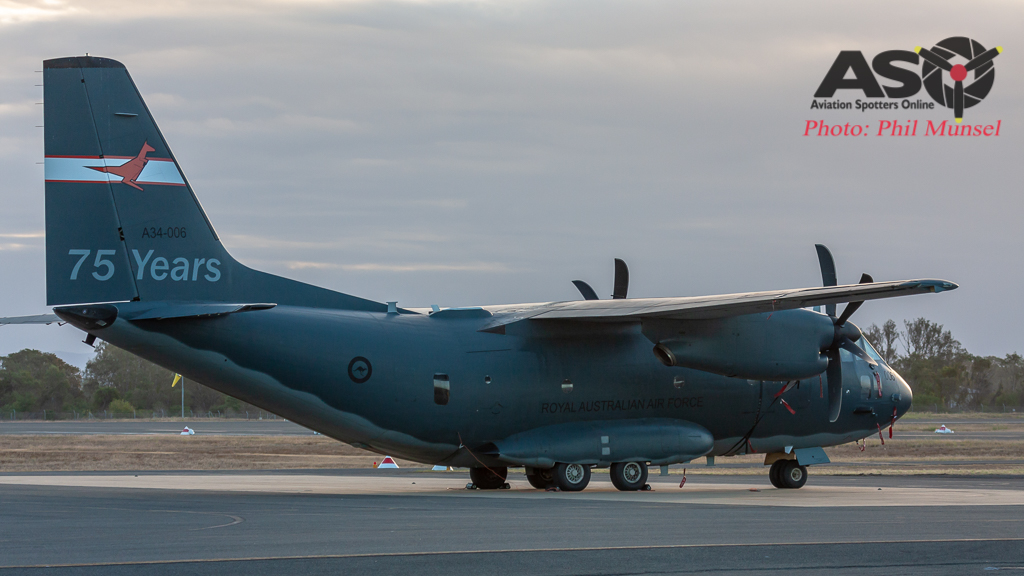
RAAF Spartan A34-006 wearing 75 year anniversary tail markings of ‘Wallaby Airlines’ from 35 Squadron, on the ramp at Rockhampton, during Exercise Hamel 2018.
Following my interview with CO Dan Bartle, we wandered back to the top of the airfield for a few more shots before signing out and making our way back to the check point of ‘The Green Gate’. Captain Mick Trainor advised me of another photo opportunity in 40 minutes back in town at the Rockhampton Grammar School that I might want to capture before going our own ways. It turned out that a one of the aircrew was a former border at the school and wanted to give back to the school by flying into the school oval to promote the Army as a career for the younger generation.
The Shoalwater Bay Training Area is continually proving it can provide the environment required to hold world class authentic warlike training for the armed forces who visit. Aviation Spotters Online are very appreciative to be able to attend opportunities such as this within highly active military training areas and exercises as they happen. We are grateful of the Public Affairs office for allowing the media to access the special events which gives us the chance to photograph, document, share and promote what the military do out of the public eye.
I would like to acknowledge and thank, Lieutenant Colonel Daniel Bartle of 1st Aviation Regiment of the Australian Army based in Darwin, for his kind and friendly welcome into TG Griffin. Major Felicity Hamblin, Australian Army Public Affairs Officer in conjunction with Exercise Hamel for the opportunity. Captain Michael Trainor, Australian Army Public Affairs Officer as my escort for the morning. Additional thanks to Royal Australian Air Force Tina Turner, Regional Manager Public Affairs SE QLD for our recommendation. I look forward for further opportunities working alongside the Australian Defence Force and our allied armed forces in future deployments.
Cheers…Phil Munsel
Aviation Spotters Online photographer – Rockhampton
My tools of the trade are Canon 7D, 40D, Canon 100-400mm, 24-105mm and SanDisk CF cards.
Please Click HERE to see the full gallery of images.

